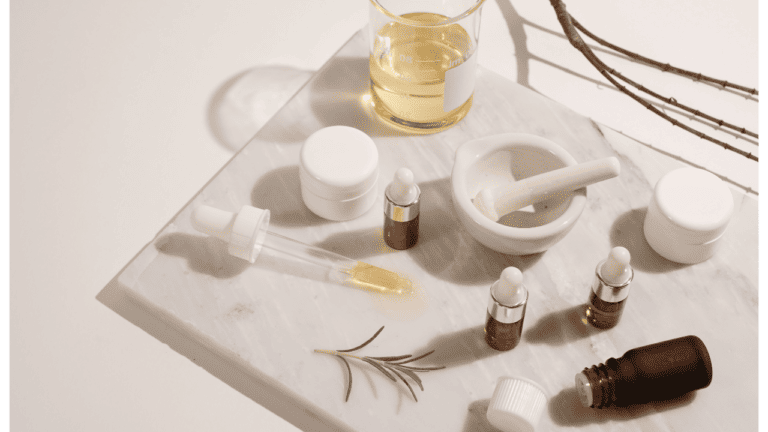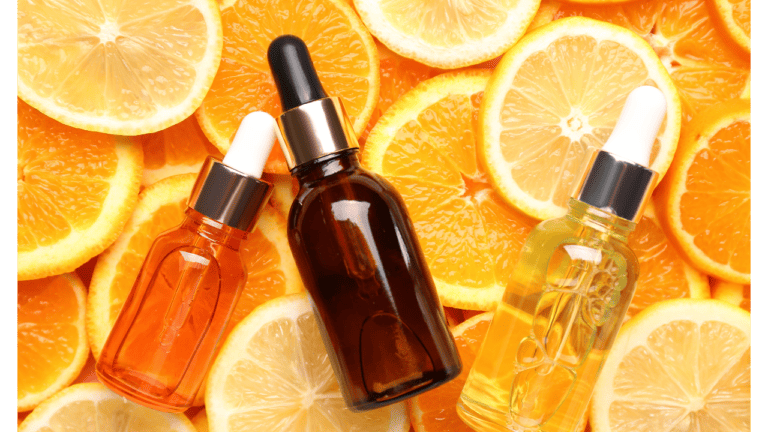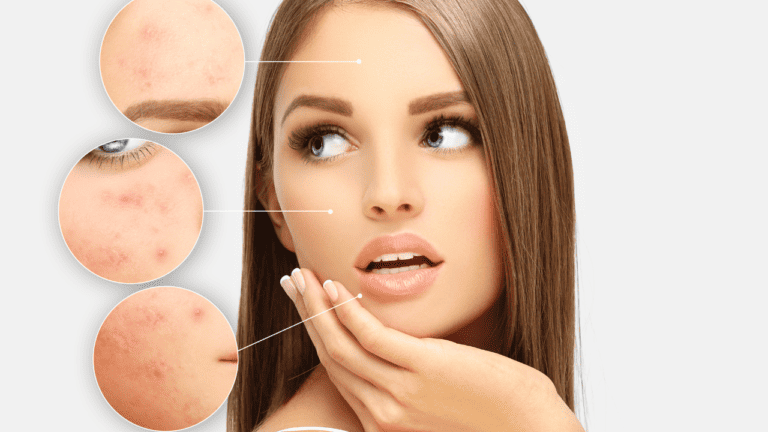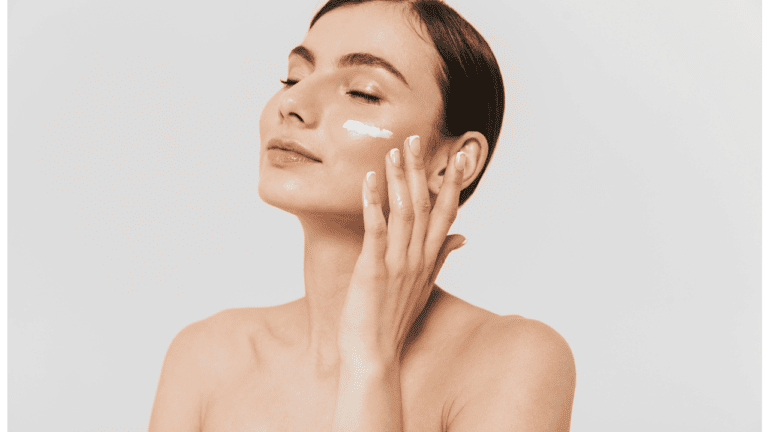Facial steaming has numerous benefits by itself, but what you do before and after your facial steam has a huge impact on how many benefits you’re able to get each session. If you don’t clean your face well enough then facial steaming could even be detrimental to your skin. Having used facial steaming as an essential part of my skincare routine to control my sebum and help circulate my blood flow, here are some tips I have for you on how to properly prepare your skin for steaming, and what exactly to do afterward to get the skincare goals you want with the help of your favorite facial steamer.
What is Facial Steaming?
Facial steaming is a skincare treatment that involves exposing your face to warm steam, typically generated by hot water or a facial steamer. You could do DIY facial steaming easily by boiling water, putting it in a bowl, and hovering your face over it with a towel over your head for 5 to 10 minutes.
At the same time, I love having a facial steamer that creates a steady stream of steam for me to just relax and enjoy. Some facial steamers even come with other uses such as creating warm towels, being humidifiers as well as creating steam with negative ions which have a positive effect on our mood and health.
It genuinely makes many people feel that they are getting a facial experience without the need for many fancy tools or chemicals or invasive techniques. Plus, it helps to open up our pores and provide deep cleansing, promoting a healthy radiant complexion.
Benefits of Facial Steaming
Facial steaming offers many benefits, but the highlights of them are:
- Opening up and unclogging pores
- Enhancing circulation and promoting a healthy glow
- Softening and hydrating the skin
- Improving the absorption of skincare products
- Relaxing and rejuvenating the senses
What To Do Before Steaming Your Face
Prepping your face for your facial steam is an important step to ensure you get the best results, it provides a clean start to your skincare routine and at the same time minimizes potential issues such as irritation or breakouts that could occur from poorly prepared skin.
- Cleanse your skin: Start by removing all makeup using a makeup remover or a gentle cleansing oil. Follow up with a water-based cleanser to eliminate dirt, sweat, and any remaining impurities. This is essentially double-cleansing, ensuring your skin is thoroughly clean and ready for steaming because when you steam, your pores will open, and you don’t want to risk any dirt getting deep into your pores.
- Exfoliate gently: Use a gentle exfoliating scrub or a chemical exfoliant (such as AHA or BHA) to slough away dead skin cells and reveal a smoother, more radiant complexion. Exfoliating before steaming helps unclog pores and allows for better penetration of the steam and subsequent skincare products.
- Tie your hair back: Make sure to pull your hair away from your face using a headband or hair tie because your hair could get in the way of your steaming process. This is more important if your hair hasn’t been washed, or has some haircare products in it that could affect your skin.
- Create a relaxing atmosphere: To enhance the experience, consider dimming the lights, lighting a few candles, and playing soft, calming music. This will help you relax and unwind during the steaming session.
- Gather your post-steaming skincare products: Before you start steaming, make sure you have your towel, toner, serum, moisturizer, and any masks or treatments you plan to use afterward within reach. Your pores only stay open for a little while after facial steaming, so you have to ensure you can quickly move on to the next step without disrupting the flow of your skincare routine.
What To Do After Steaming Your Face
What you do after steaming your face is essentially what makes facial steaming so worth it. Because your pores are open and ready to absorb more than usual, it’s the best time to bring out your favorite skincare products that you want to infuse into your skin.
Potent ingredients will be able to penetrate more deeply so just keep that in mind and be on the lookut if any irritation occurs, treat your skin gently as well because after being steamed, our skin is usually a bit more fragile and softer to impact. Here is a step-by-step routine that I often use after steaming my face:
- Gently wash with warm or cool water: Depending on what you want to do after, use warm water if you’re using facial steaming as a way to
- Gently pat your skin dry: Use a clean, soft towel to gently pat your face dry. I enjoy running some warm water over the towel so that my skin does not cool too quickly. Avoid rubbing or tugging, as this may cause irritation or damage the skin.
- Apply a toner: Choose a toner suited to your skin type and concerns. Using a cotton pad or your hands, apply the toner evenly across your face. This will help restore your skin’s pH balance, tighten your pores, and provide an extra layer of hydration.
- Use a targeted treatment: After steaming, your skin is more receptive to skincare products, making it an ideal time to apply a targeted treatment, such as a serum or spot treatment. Select a product that addresses your specific skin concerns, like an antioxidant serum for brightening or spot treatment for blemishes.
- Apply a face mask (optional): Depending on your skin type and goals, you might consider using a face mask post-steaming. Clay masks are great for drawing out impurities and controlling oil production, while hydrating masks can help soothe and nourish dry skin. Leave the mask on for the recommended time, then rinse off with lukewarm water.
- Moisturize your skin: Lock in hydration and nourish your skin by applying a moisturizer that suits your skin type. For dry skin, opt for a richer cream, while those with oily or combination skin should look for lightweight, oil-free formulations.
- Seal with a facial oil (optional): If you have dry or dehydrated skin, you may want to add a facial oil to your routine. I know you seem to have just hydrated your face with water, but a few drops of oil can really help lock in the moisture and protect your skin barrier which is e your complexion a radiant glow. Make sure to choose a non-comedogenic oil to avoid clogging your pores.
- Apply sunscreen (if steaming during the day): If you’ve steamed your face during the day, don’t forget to apply a broad-spectrum sunscreen with at least SPF 30 to protect your skin from the sun’s harmful rays. Even if you’re indoors, UVA rays can penetrate through windows and contribute to premature aging.
- Gently pat your skin dry with a clean towel.
- Apply toner using a cotton pad to restore your skin’s pH balance and tighten the pores.
- Follow up with a hydrating serum or moisturizer to lock in moisture and nourish the skin.
For those with dry skin, consider these steps after facial steaming:
Apply a nourishing face mask (optional): Depending on your skin’s needs, you may want to use a hydrating face mask post-steaming. Sheet masks or cream-based masks containing ingredients like hyaluronic acid, aloe vera, or honey can provide additional moisture and nourishment. Leave the mask on for the recommended time, then rinse off with lukewarm water or remove the sheet mask.
Seal with a facial oil (optional): For added hydration and protection, consider applying a few drops of a facial oil to your skin. I know you seem to have just hydrated your face with water, but a few drops of oil can really help lock in the moisture and protect your skin barrier which is e your complexion a radiant glow. Make sure to choose a non-comedogenic oil to avoid clogging your pores. Examples of these are oils like argan, rosehip, or marula oil, which provide an extra layer of nourishment for your skin without clogging it.
For Combination and Oily Skin follow these tips after facial steaming:
Combination and Oily skin often are combating excess sebum production and blackheads, so these tips are designed specifically to target these issues. I also enjoy facial steaming because it helps increase blood flow which I find important for healing my acne scars. Personally, I have very oily skin and am prone to acne, I have found facial steam helps to relax my pores and it almost feels as though the oil is just oozing out of my skin. This is why I always enjoy using a clay or charcoal mask right after.
Clay or charcoal mask (optional): After steaming, consider applying a clay or charcoal mask to help absorb excess oil and unclog pores. This is the best time to use masks because our pores are enlarged and blackheads and dirt can be more easily extracted. However, keep in mind that this step is optional and should not be done too frequently, as it may lead to over-drying the skin. Once or twice a week is generally sufficient.
Serum or targeted treatment: Apply a lightweight serum or treatment formulated to address oily skin concerns. If you use potent ingredients like salicylic acid, or tea tree oil, it can help regulate sebum production, reduce inflammation, and prevent breakouts.
Oil-free moisturizer: It’s essential to moisturize even if you have oily skin because if you don’t, it can actually lead to more breakouts. Opt for a lightweight, oil-free, and non-comedogenic moisturizer to keep your skin hydrated without clogging your pores or causing excessive oiliness.
Sunscreen (during the day): Apply a broad-spectrum sunscreen with at least SPF 30 to protect your skin from the sun’s harmful rays. For oily skin, look for a matte-finish, oil-free sunscreen to prevent added shine and greasiness.
My current favorite is the Bioré UV Aqua Rich Watery Essence SPF 50+ PA++++. It’s a popular Japanese sunscreen because this water-based formula provides broad-spectrum protection, and yet it feels so lightweight it feels like it’s barely there.
In conclusion, facial steaming is a fantastic addition to any skincare routine. By following the steps outlined in this blog post, you’ll be able to experience the benefits of facial steaming and properly care for your skin before and after the treatment. Happy steaming!









